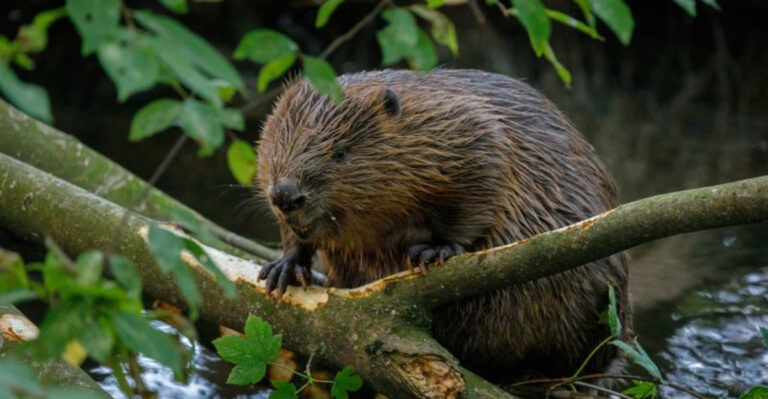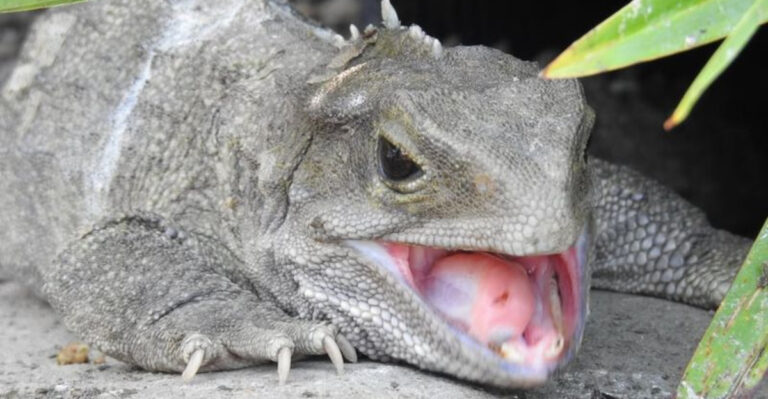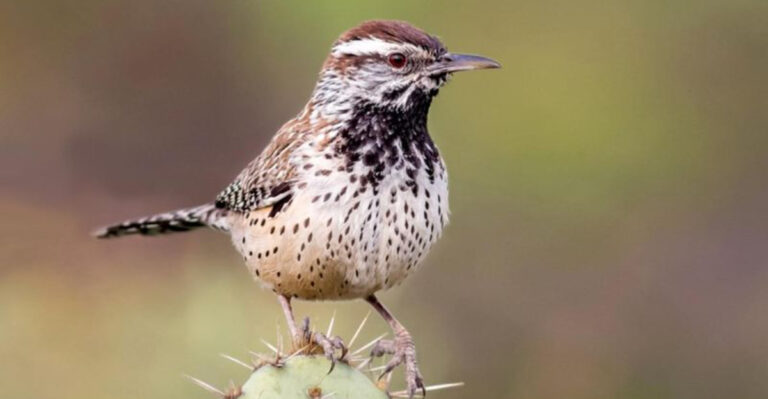10 Of The Most Venomous Snakes Of Florida
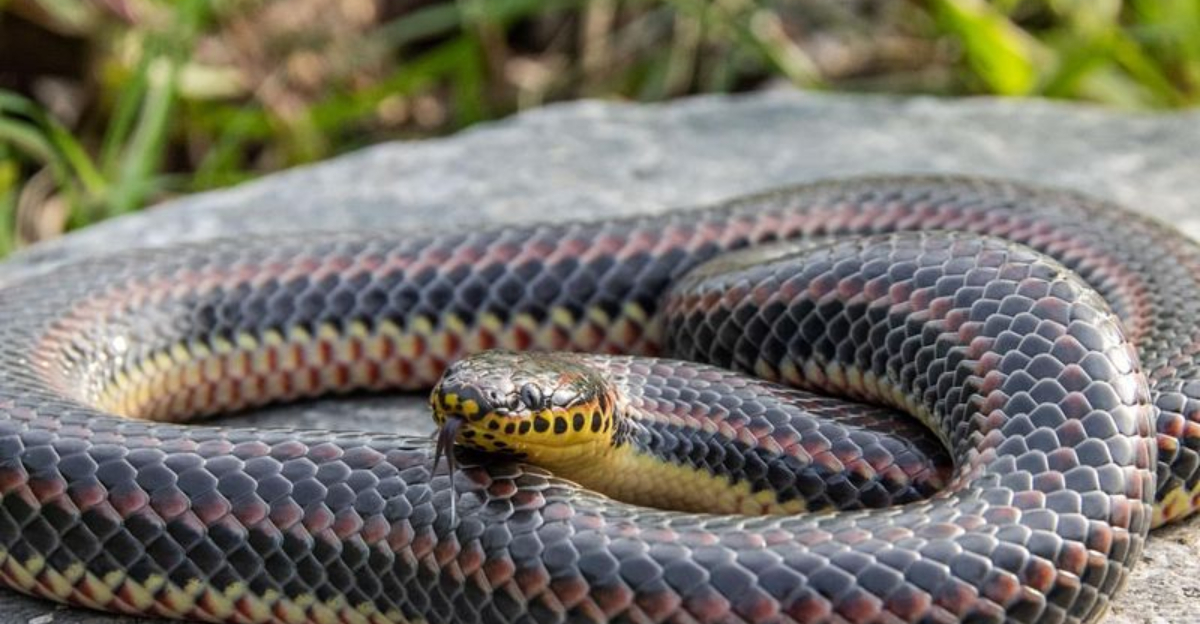
Florida is home to an impressive diversity of wildlife, including some of the most venomous snakes. These creatures, while dangerous, play a crucial role in the ecosystem.
In this list, we’ll explore of the most venomous snakes found in Florida, delving into their unique characteristics, habitats, and what makes them so fascinating.
1. Eastern Diamondback Rattlesnake
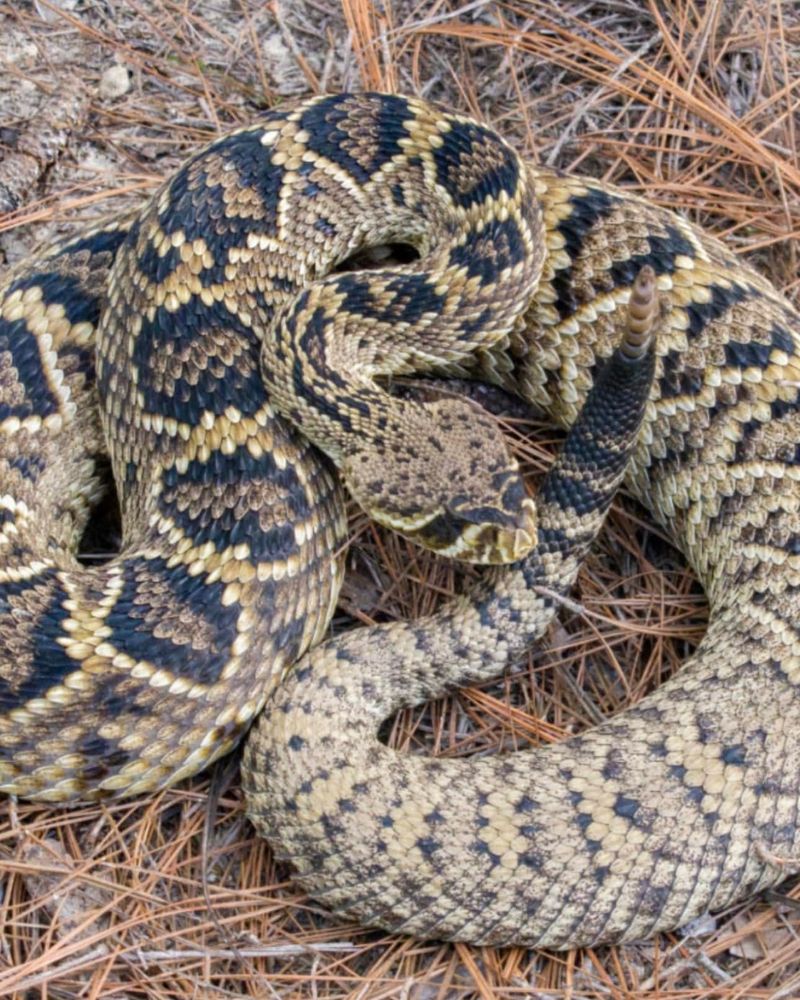
The Eastern Diamondback Rattlesnake is the largest venomous snake in Florida, recognized for its striking diamond pattern. They primarily inhabit dry pinelands, palmetto flatwoods, and coastal dunes. Encountering one is a rare but exciting experience.
This snake can grow up to eight feet, making it a formidable presence in its environment. Its venom is highly potent, delivered through long, retractable fangs. Despite their fearsome reputation, these snakes generally avoid humans and only strike when threatened.
Understanding their behavior and habitat can help reduce the risk of encounters. If you happen to see one, it’s best to admire it from a distance. Keeping a safe distance and respecting their space ensures safety for both humans and snakes.
2. Cottonmouth (Water Moccasin)
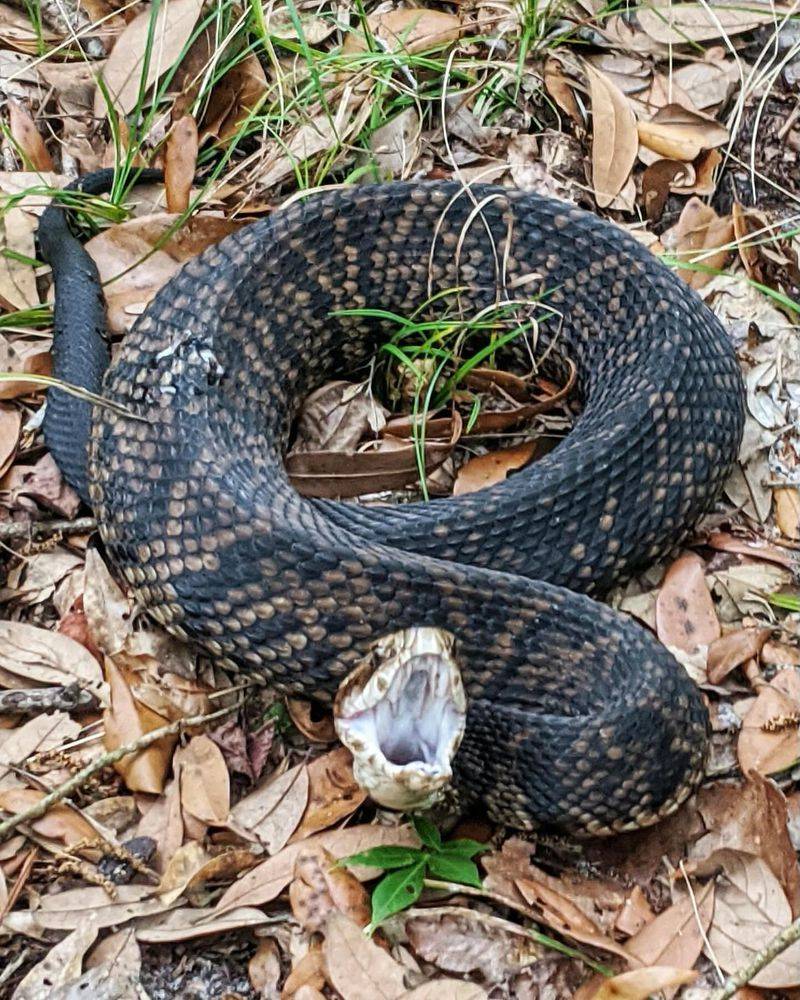
Known also as the Water Moccasin, the Cottonmouth is often found in Florida’s wetlands and swamps. Its name comes from the white coloration inside its mouth, which it displays when threatened, acting as a warning sign.
These semi-aquatic snakes are excellent swimmers and can often be seen basking on logs near water. They have a heavy body and can reach lengths of up to six feet. The Cottonmouth’s venom is hemotoxic, causing tissue damage and intense pain.
Though they have a reputation for aggression, they usually escape to the water when disturbed. It’s a myth that they chase humans; instead, they defend themselves when cornered. Avoiding them is the best strategy to prevent bites.
Their role in controlling fish and amphibian populations makes them vital for the ecosystem. Observing these fascinating creatures from a safe distance allows for peaceful coexistence.
3. Eastern Coral Snake
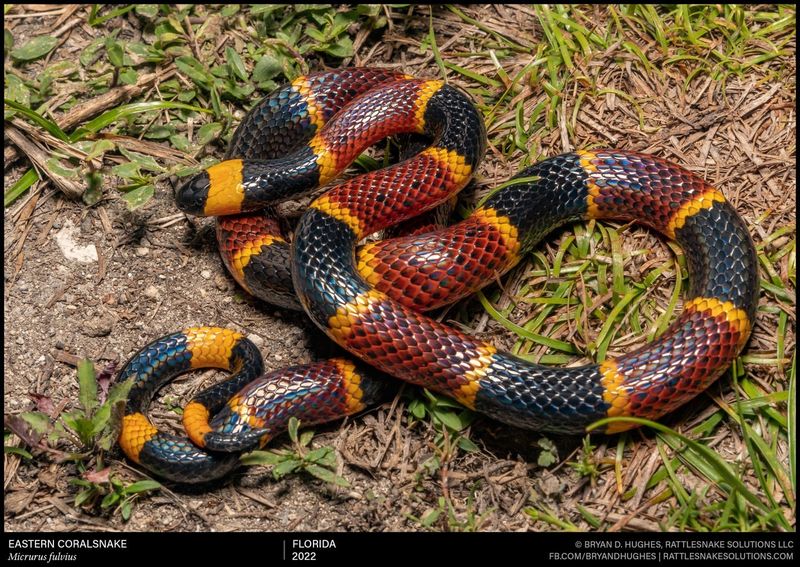
The Eastern Coral Snake is one of Florida’s most visually striking snakes, easily recognized by its vivid red, yellow, and black bands. This snake’s colorful appearance serves as a warning to predators.
Unlike other venomous snakes in Florida, the Coral Snake’s venom is neurotoxic, affecting the nervous system and potentially causing respiratory failure. Despite its potent venom, bites are rare due to the snake’s reclusive nature.
Coral Snakes prefer hiding under leaves and logs, coming out mostly at dawn or dusk. They are often confused with non-venomous mimic species like the Scarlet Kingsnake. Remember the rhyme, “Red touch yellow, kill a fellow; red touch black, friend of Jack,” to distinguish between them.
These snakes play a role in controlling small reptile populations, aiding in maintaining ecological balance. It’s crucial to leave them undisturbed to avoid potentially dangerous encounters.
4. Timber Rattlesnake
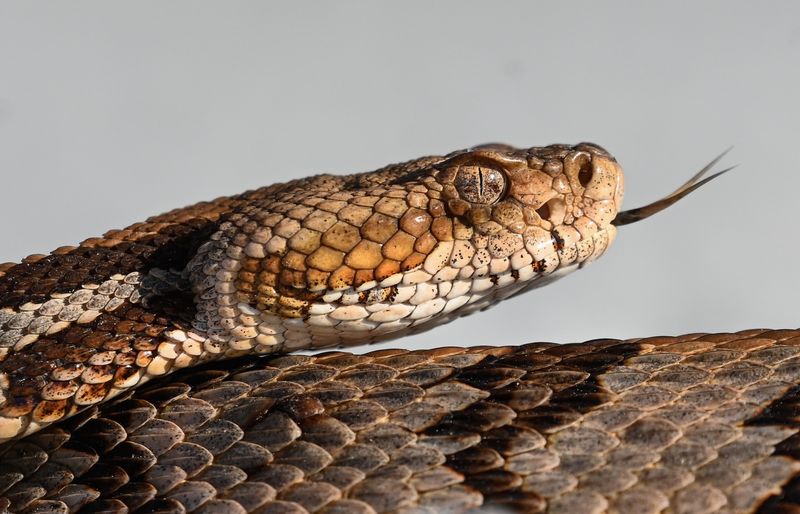
The Timber Rattlesnake, while not as common as others in Florida, commands respect with its robust body and distinct rattle. Its habitat includes forests and rocky uplands, where it remains well-camouflaged.
This snake is characterized by a series of dark, chevron-shaped crossbands over a lighter background. It typically grows to about five feet in length. The Timber Rattlesnake’s venom contains both neurotoxic and hemotoxic properties, making it particularly dangerous.
Encounters with humans are rare, as they prefer solitude and are less tolerant of human activity. However, if you find yourself near one, it’s crucial to remain calm and back away slowly. Their diet consists mainly of rodents and birds, which helps control these populations.
Protecting their habitat is important for maintaining their presence in the ecosystem, supporting ecological health.
5. Pigmy Rattlesnake
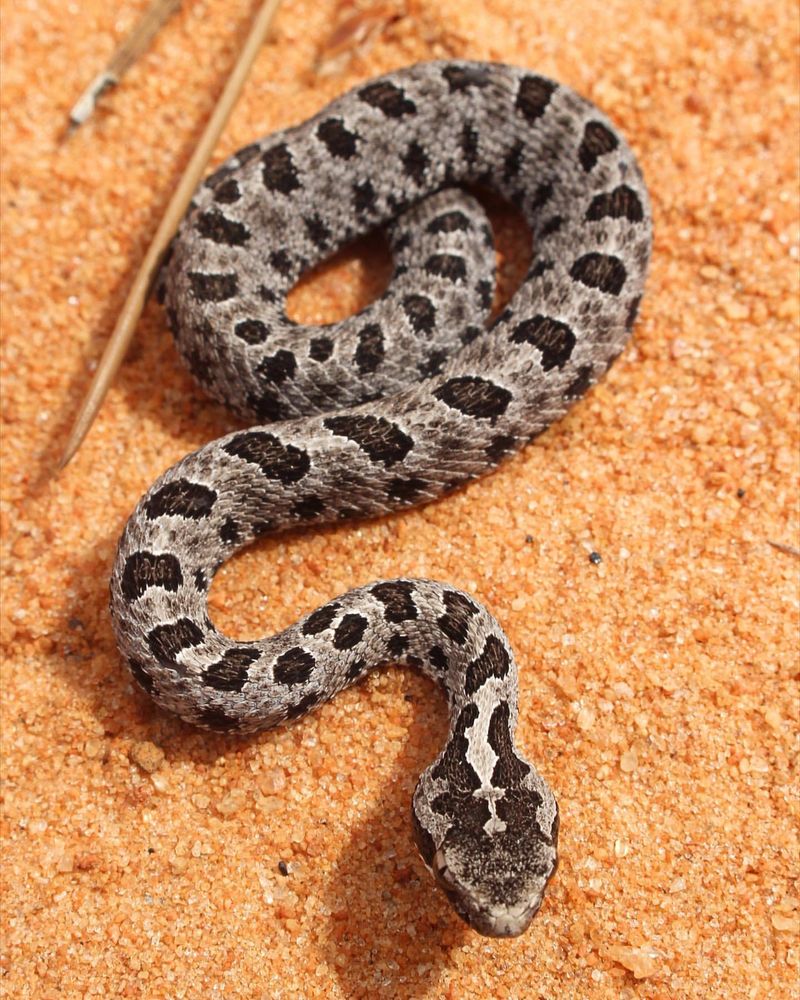
The Pigmy Rattlesnake may be small, but it carries a potent venom. Found throughout Florida, it resides in a range of habitats including forests, grasslands, and marshes. Despite its size, it shouldn’t be underestimated.
Typically reaching lengths of only 20 to 24 inches, this snake is often overlooked due to its excellent camouflage among the leaves and ground cover. Its venom causes localized pain and swelling, but it is rarely fatal to humans.
If bitten, immediate medical attention is crucial to manage symptoms effectively. Their small size and cryptic nature can make them difficult to spot, emphasizing the need for vigilance when hiking or walking in natural areas.
6. Southern Copperhead
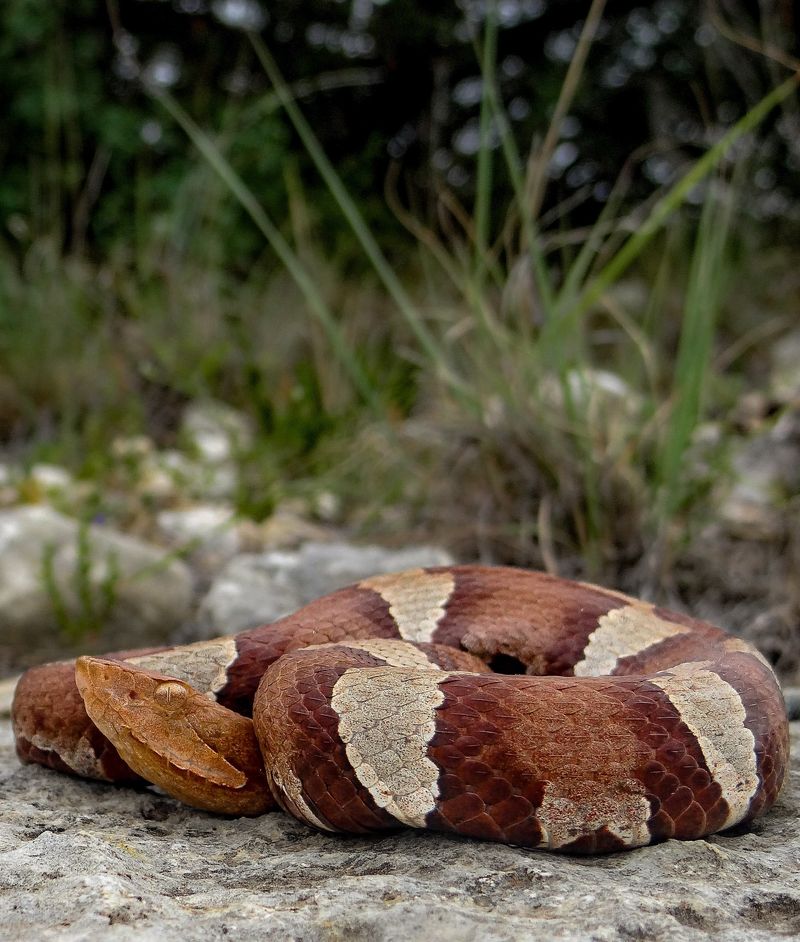
Southern Copperheads are among the more common venomous snakes found in Florida’s northern regions. These snakes are easily identified by their distinctive copper-colored bands. They favor wooded and rocky areas where they blend seamlessly with their environment.
Copperheads are typically two to three feet long and have a relatively mild temperament. Their venom is hemotoxic, causing pain and swelling, but bites are rarely life-threatening. They tend to freeze when encountered, relying on their camouflaging ability rather than fleeing.
This behavior can lead to accidental bites if they are inadvertently stepped on. Wearing boots and watching your step in likely habitats can prevent unwanted encounters. The Southern Copperhead’s diet consists mainly of small mammals, birds, and amphibians, which helps in controlling these populations.
Their role in the ecosystem underscores the importance of conservation efforts.
7. Dusky Pygmy Rattlesnake
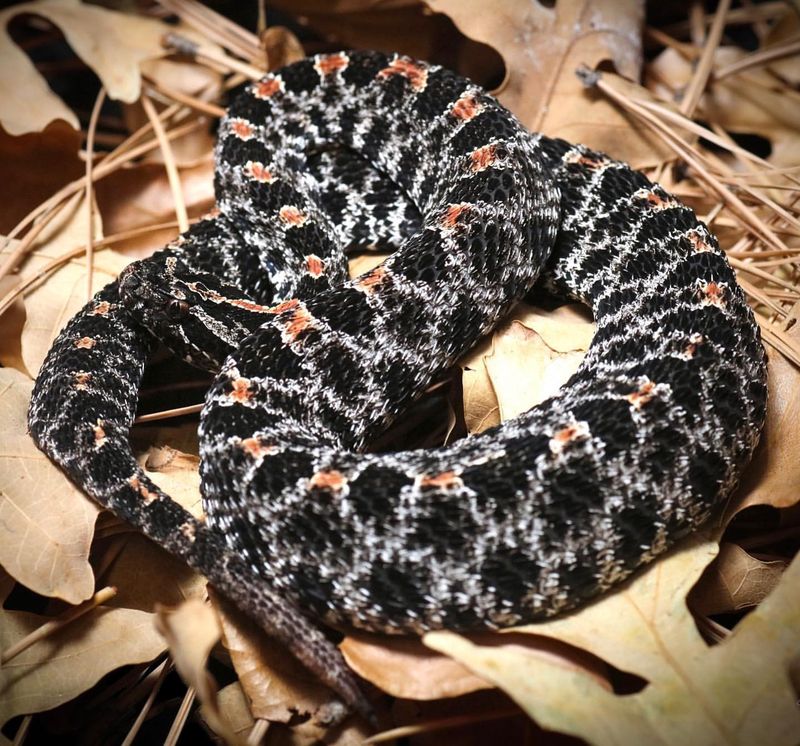
The Dusky Pygmy Rattlesnake is a smaller yet fascinating member of the rattlesnake family found in Florida. It thrives in a variety of habitats including pine flatwoods, scrublands, and near freshwater sources.
With a length typically under two feet, its size belies its potential for delivering a painful bite. The dusky, spotted pattern provides excellent camouflage against the forest floor. Its venom causes mild to moderate symptoms in humans, such as pain, swelling, and discoloration. Despite its size, it should not be underestimated.
Observing from a distance allows for appreciation of its role in controlling pest populations, such as insects and small rodents. Understanding and respecting their place in Florida’s diverse ecosystem is key to enjoying outdoor activities safely.
8. Florida Cottonmouth

The Florida Cottonmouth, a subspecies of the common Cottonmouth, shares many characteristics with its relative but is distinct to Florida. Found in wetland regions, this snake’s name derives from the white lining of its mouth, which is flashed in a defensive display.
This snake can often be seen basking on logs or swimming in swampy waters. Its thick, muscular body can reach up to six feet in length. The venom is potent and can cause severe symptoms in bitten individuals. While they have a reputation for aggression, these snakes are more likely to retreat than attack.
Avoiding disturbing them is the best way to prevent a bite. The Florida Cottonmouth plays a crucial role in the ecosystem by controlling fish and amphibian populations. Observing them from a respectful distance ensures safety and allows for an appreciation of their place in nature.
9. Canebrake Rattlesnake
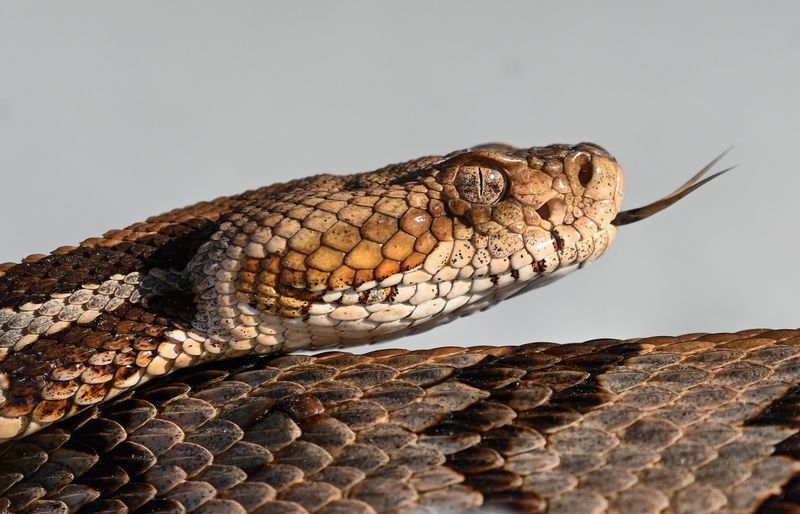
The Canebrake Rattlesnake, often confused with the Timber Rattlesnake, is primarily found in Florida’s northern areas. This snake is distinguished by its lighter coloration and pinkish hue. Growing up to six feet in length, it possesses a potentially lethal combination of hemotoxic and neurotoxic venom.
Despite this, it avoids humans, preferring the cover of dense vegetation and forests. Human encounters are uncommon, but it’s vital to exercise caution in habitats where they may reside. Wearing appropriate footwear and staying on trails can minimize the risk of encounters.
They feed on a variety of small mammals and birds, playing a significant role in maintaining ecological balance. The Canebrake Rattlesnake is an integral part of Florida’s wildlife, showcasing the state’s rich biodiversity.
10. South Florida Rainbow Snake
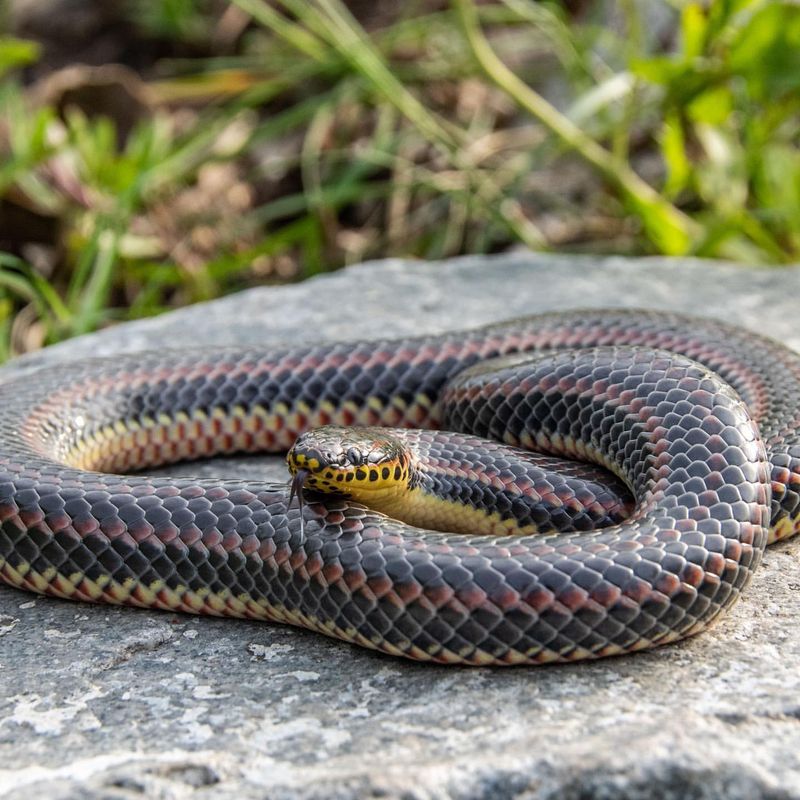
The South Florida Rainbow Snake, though rare and less well-known, is a non-venomous curiosity of Florida’s snake fauna. Its bright, iridescent scales set it apart from other native species. This snake prefers aquatic environments like swamps and marshes, often hiding among vegetation.
The Rainbow Snake can grow over four feet long, feeding primarily on eels and other small aquatic creatures. While not venomous, its vivid coloring may lead to misidentification, prompting unnecessary fear. Understanding and appreciating its harmless nature can foster coexistence and admiration.
Respecting its environment and observing from a distance ensures the safety of both the snake and the observer. The Rainbow Snake’s presence highlights the diversity and beauty of Florida’s natural habitats. As a part of the ecosystem, it contributes to the balance and health of aquatic environments.

